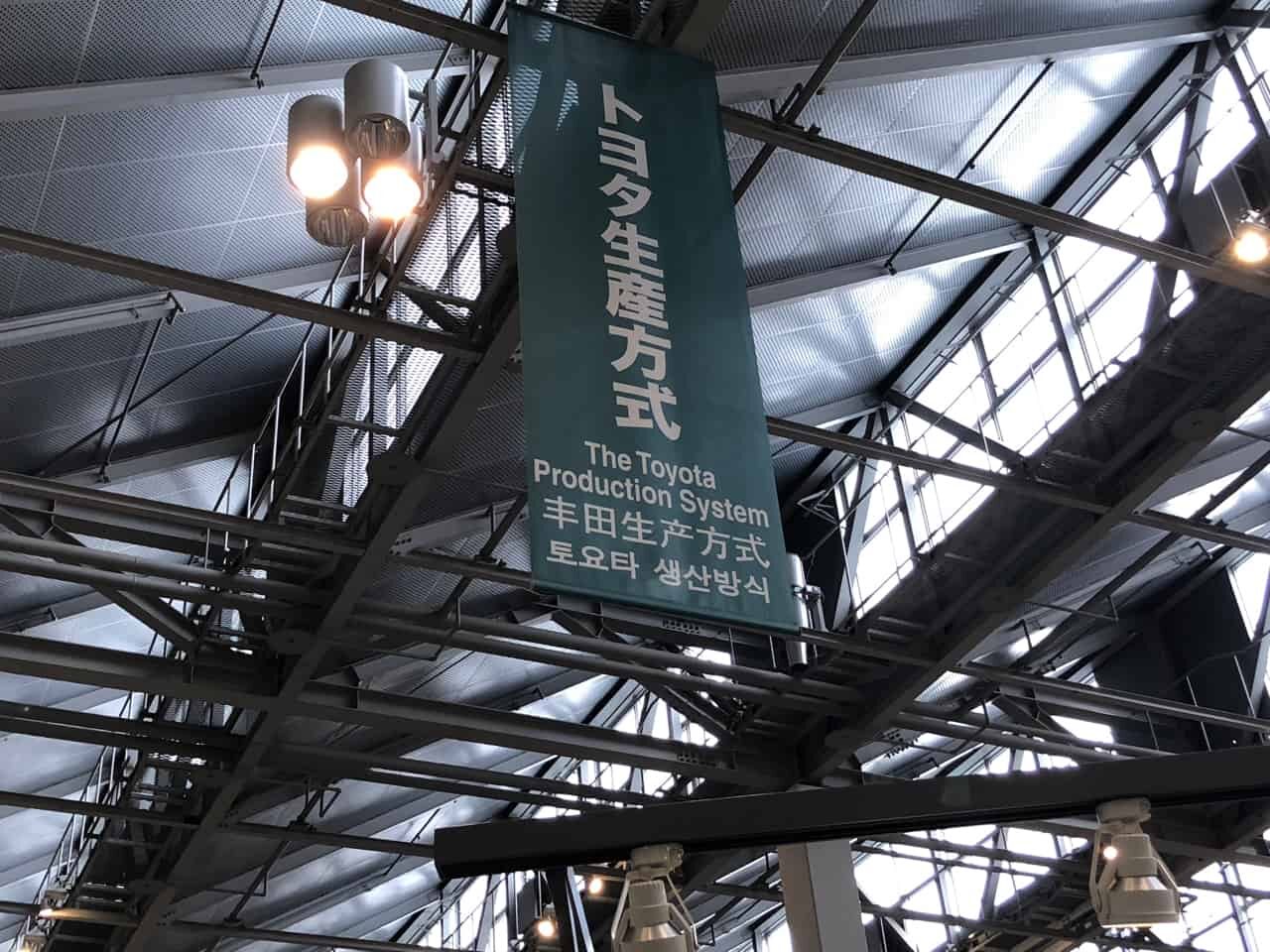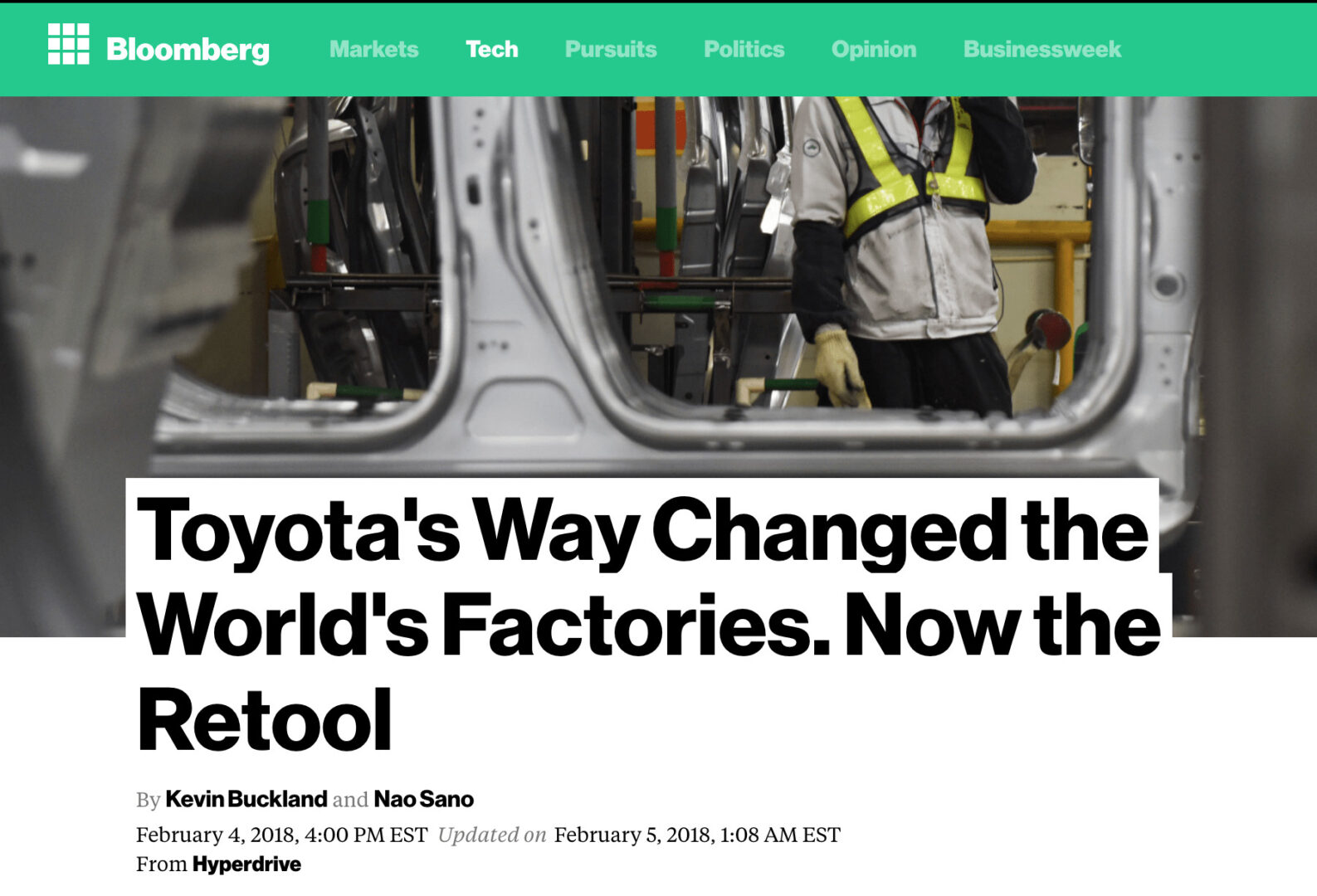Last week, I was in Japan for my third Lean healthcare study trip. More posts will follow with details from our stops along the way.
The cover photo for this post was one I took last Sunday at the Toyota Commemorative Museum of Industry and Technology in Nagoya. Of course, they have a section of the museum on the Toyota Production System. The museum has changed a lot from four years ago, with many additions, but some of the core TPS exhibits are the same (see a post from the 2014 trip).
Last Monday, I was able to visit one of the Toyota factories near Nagoya. I also had a chance to learn, last Wednesday, about how Toyota is directly helping some hospitals, which is a new initiative since my last visit in 2014. Again, more details to follow in future posts.
But, for now, here's an interesting Bloomberg article about Toyota never being satisfied, which includes improving the way they improve:
“Toyota's Way Changed the World's Factories. Now the Retool“
Many organizations, including those in healthcare, start off with Lean being a “program.” Hopefully, it eventually becomes “the way we think” and “the way we do things around here.”
I've heard of a few healthcare organizations in the past few weeks that completely eliminated their internal “Lean team” or whatever they called it. They laid off the internal consultants. Maybe the organization continues thinking Lean, managing Lean, and practicing Lean. Or, that's the end of Lean in their organization for now if it no longer has the endorsement of their senior team.
If there's any organization out there for which Lean is not a “program,” it's Toyota. Yet, they've still had “internal TPS consultants” or experts of various types. And the news from Bloomberg is that they centralized that group.
The automaker last month created a single group, staffed with 200 employees, to manage the Toyota Production System, centralizing a function that was spread out through the organization. Their task is to evaluate how core concepts like kaizen, or continuous improvement, can be applied to new businesses that include car sharing and consumer robots. The person in charge is 59-year-old Shigeki Tomoyama, a career Toyota executive who wields a tablet computer during events, making him look more like a Silicon Valley software engineer than a car guy.
Evaluating how to apply core Lean concepts to new areas of a health system would be one useful role of an internal Lean group. That central team can serve as coaches and trainers, maintainers of Lean standards — but they can't “implement Lean for you.” They can't “make you Lean.” But, they can help.
Unless you lay them off.
Back to Toyota:
“We want to systematically go over every step in our processes — from R&D to manufacturing, sales and servicing — in order to raise the combat effectiveness of our business as a whole,” Tomoyama said in an interview last month. “The backdrop to all this is President Toyoda's extremely strong sense of crisis.”
Many healthcare organizations are in a sense of financial crisis. They might even describe it as an “extremely strong sense of crisis.” They could “systematically go over every step” in their processes. Or, they can try to cut costs, which sometimes includes laying off their Lean team.
Again, from the article:
“If we want to make the most of Toyota's strength in creating new business models, it's going to require applying TPS,” Tomoyama said. “We want to show people inside and outside the company that TPS is still central to Toyota.”
That's good to hear. That's a nice change from the bad news I keep hearing about in healthcare, with organizations giving up on their Lean journeys — or laying off their central teams… which might be one and the same).
I also learned last week that Toyota has long had a group called the “TQM Promotion Office” (TQM being “Total Quality Management,” of course). That group still exists but is now called the “Process Quality Innovation Division.” I'm not sure if that has been folded into the team of 200, as the person presenting was somewhat recently retired from Toyota.
Please scroll down (or click) to post a comment. Connect with me on LinkedIn.
Let’s work together to build a culture of continuous improvement and psychological safety. If you're a leader looking to create lasting change—not just projects—I help organizations:
- Engage people at all levels in sustainable improvement
- Shift from fear of mistakes to learning from them
- Apply Lean thinking in practical, people-centered ways
Interested in coaching or a keynote talk? Let’s start a conversation.











![When Was the Last Time a Leader Around You Admitted They Were Wrong? [Poll]](https://www.leanblog.org/wp-content/uploads/2025/07/Lean-Blog-Post-Cover-Image-2025-07-01T212509.843-100x75.jpg)
Toyota may be creating a new ‘simple and slim’ style of factory, and revisiting the details of TPS. But I think it is just an expansion and more aggressive application of the basic principles that have always guided and driven their activities.
To understand this comment we must understand the main goals and activity goals of TPS. They are the 4R’s. Results, Resources, Resourcefulness and Respect.
The first ‘R’ is for Results. The main performance Results for TPS are to give the customer;
What they want. (The best P, S, and E available in your industry. Product, service and experience). — In the quantity and with the quality – zero defects, they want. (One piece flow with. Jidoka and Poka-Yoke devises will give this capability.). — Delivered when they want it. (Just in time to suit their needs. Takt time is the driver). — These values must also be improving faster than those of any existing or future competitor. —
There are three main activity goal areas in TPS to achieve this. Only the first one is used as a central theme in Lean Thinking.
The second ‘R’ is Resources. The goal in this area is to achieve the three performance goals using the minimum ‘Resources’ (i.e. materials – machinery – methods – movement – minutes – manpower – money). Anything above the minimum resources required to produce the product, service and experience that will delight the customer is defined as waste, and is a target for removal. This is one the main areas of focus for TPS and lean activities – Waste elimination. What cannot be removed should then be seen as a target to be continuously improved. The first rule in this area is; ‘can we remove it before you try to improve it. —
(The new Toyota ‘simple & slim’ factory design takes waste elimination to a new level. They will be 25% smaller, cost less to build, use much less energy & reduce emissions. Other features are listed below.) –
The third ‘R’ is Resourcefulness. The goal in this area is to release the ‘Resourcefulness’ (talent, creativity and enthusiasm) of all our people to achieve the first three goals. This ability must also drive the waste elimination and continuous improvement process throughout your organisation and down through your supply chain. The key rule in this area is; ‘sustain the gains, maintain the change.’—
(The new ‘Toyota New Global Architecture’ is a wonderful example of the resourcefulness of their people. It will enable designs to be customised to specifically suit local market needs. 75% of the investment saving from TNGA will be invested into ‘making even better cars’. TNGA will achieve significant reductions in new model introduction times. The new factories can adjust output to suit a 50% change in demand within a single shift. The new smaller style of factory with their no ‘hanging no digging’ features & surface mounted conveyors. To new paint plants that are smaller, 40% cheaper to build and use 40% less energy. Equipment that reduces pre-heat times on sheet metal parts from 5 mins to 15 seconds & now can preheat one piece, to Laser Screw Welding that can halve welding times.) –
The fourth ‘R’ is ‘Respect’. We must see ‘RESPECT’ as the password that gives access to the file that contains our people’s total ability (talent, creativity & enthusiasm). Without the correct password, access will not be possible. We need the ability of all our people to achieve the maximum effectiveness of the first 3R’s. This is one of the key bonding elements between managers & their people. The key rule in this area is; Star managers must make their people shine. –
Anyone who understands TPS will tell you the third and fourth R’s are central to its success. They are missing from too many lean programmes and this is the reason for many of their failures.
When you apply this thinking not only to your external and internal customer contact areas, but also down your supply chain, you will start to understand where and how Toyota’s amazing performance and competitive advantage are created. —
Two quotations to clarify and confirm our thinking. —
“Of course what is important is not the system, but the creativity of human beings”. Taiichi Ohno. —
When trying to understand lean and TPS, or anything else, we should always remember Pavlov’s words. “Don’t be a collector of facts. Try to penetrate to the secrets of their occurrence, persistently search for the laws that govern them”.
It would be interesting to define the details of the 4R’s for Health Car.e.